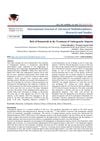6 months after switching to Dutasteride, lost more hair than ever Finasteride/Dutasteride 3/20/2025
Switching from finasteride to dutasteride can cause increased hair shedding, which may last several months before potential regrowth. Some users suggest combining both medications or waiting up to a year for improvement, while others report better results with finasteride alone.
View this post in the Community →
Similar Community Posts Join
6 / 1000+ resultscommunity The Finasteride Shed is real.
Increasing finasteride dosage can cause significant hair shedding initially. Users suggest adding minoxidil or switching to dutasteride for better results.
community DHT/Testosterone levels in scalp Fin VS Dut.
Dutasteride raises scalp testosterone by 99%, which may not be ideal for those sensitive to all androgens. Some argue finasteride's balancing act might be better, while others believe dutasteride is superior for hair regrowth.
community I have not seen a single person who claims dutasteride destroyed their hair post a picture of the before/after
The conversation discusses skepticism around claims that dutasteride worsens hair loss, with some users suggesting misinformation or panic during shedding as reasons for such claims. One user shared their negative experience with dutasteride, including increased sebum production and hair loss, and is now considering a higher dose of oral minoxidil after stopping dutasteride.
community Switch from fin to dut and its worse
Switching from finasteride to dutasteride can worsen hair loss for some men due to increased testosterone levels. Topical treatments like RU58841 and Pyrilutamide are suggested to counteract these effects, but individual responses vary.
community People who continue to lose hair on fin/dut, Are you on Nicotine?
Nicotine use, especially from vaping, may worsen hair shedding and reduce the effectiveness of finasteride and dutasteride. Quitting nicotine seems to improve hair health.
community One month on oral fin. 20 years old. What the fuck is going on
A 20-year-old experiencing hair shedding after starting oral finasteride is advised to continue treatment and consider adding topical minoxidil. Shedding is normal, and patience is needed for hair regrowth.
Related Research
6 / 1000+ results
research Role of Dutasteride in the Treatment of Androgenetic Alopecia
Dutasteride effectively treats hair loss in men who don't respond to finasteride.

research Topical Ketoconazole for the Treatment of Androgenetic Alopecia: A Systematic Review
Ketoconazole may help regrow hair and increase follicle size, but more research needed.

research Androgenetic Alopecia: A Review and Emerging Treatments
Hair loss, known as Androgenetic Alopecia, is often caused by hormones and can be diagnosed using noninvasive techniques. Treatments include topical minoxidil and oral finasteride, with new treatments being explored. There may also be a link between this type of hair loss and heart disease risk.

research Efficacy of Non-Surgical Treatments for Androgenetic Alopecia: A Systematic Review and Network Meta-Analysis
Low level laser therapy works best for hair loss, followed by PRP, finasteride, and minoxidil.

research Sulfotransferase SULT1A1 Activity in Hair Follicle: A Prognostic Marker of Response to Minoxidil Treatment in Androgenetic Alopecia
Sulfotransferase SULT1A1 activity may predict minoxidil treatment success for hair loss.

research Phytochemicals as Emerging Therapeutic Agents for Alopecia Treatment
Plant-based chemicals may help hair growth and prevent hair loss but need more research to compete with current treatments.